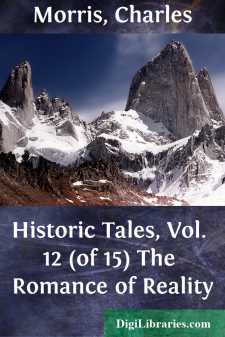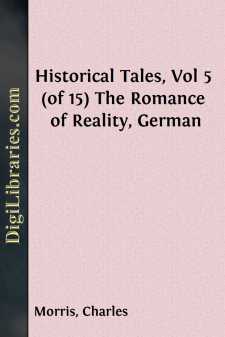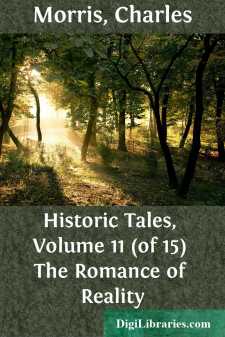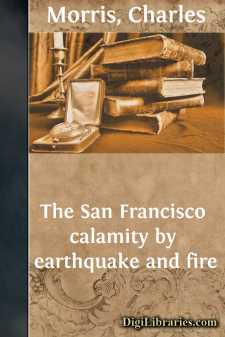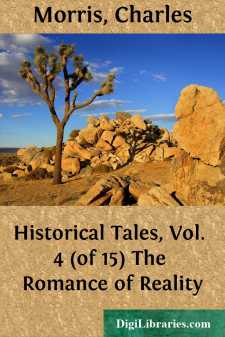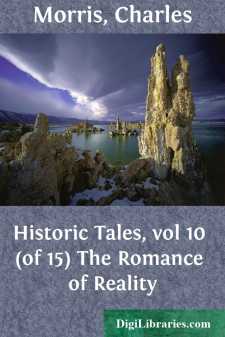Categories
- Antiques & Collectibles 13
- Architecture 36
- Art 48
- Bibles 22
- Biography & Autobiography 813
- Body, Mind & Spirit 142
- Business & Economics 28
- Children's Books 17
- Children's Fiction 14
- Computers 4
- Cooking 94
- Crafts & Hobbies 4
- Drama 346
- Education 46
- Family & Relationships 57
- Fiction 11829
- Games 19
- Gardening 17
- Health & Fitness 34
- History 1377
- House & Home 1
- Humor 147
- Juvenile Fiction 1873
- Juvenile Nonfiction 202
- Language Arts & Disciplines 88
- Law 16
- Literary Collections 686
- Literary Criticism 179
- Mathematics 13
- Medical 41
- Music 40
- Nature 179
- Non-Classifiable 1768
- Performing Arts 7
- Periodicals 1453
- Philosophy 64
- Photography 2
- Poetry 896
- Political Science 203
- Psychology 42
- Reference 154
- Religion 513
- Science 126
- Self-Help 84
- Social Science 81
- Sports & Recreation 34
- Study Aids 3
- Technology & Engineering 59
- Transportation 23
- Travel 463
- True Crime 29
Historic Tales, Vol. XIII (of 15), Part I The Romance of Reality. King Arthur
by: Charles Morris
Description:
Excerpt
INTRODUCTORY.
Geoffrey of Monmouth, the famous chronicler of legendary British history, tells us,—in reference to the time when the Celtic kings of Britain were struggling against the Saxon invaders,—that "there appeared a star of wonderful magnitude and brightness, darting its rays, at the end of which was a globe of fire in the form of a dragon, out of whose mouth issued two rays; one of which seemed to stretch itself beyond the extent of Gaul, the other towards the Irish Sea, and ended in two lesser rays." He proceeds to say, that Merlin, the magician, being called on to explain this portent, declared that the dragon represented Uther, the brother of King Ambrose, who was destined himself soon to become king; that the ray extending towards Gaul indicated a great son, who should conquer the Gallic Kingdoms; and that the ray with two lesser rays indicated a daughter, whose son and grandson should successively reign over Britain. Uther, in consequence, when he came to the throne, had two gold dragons made, one of which he placed in the cathedral of Winchester, which it brightly illuminated; the other he kept, and from it gained the name of Pendragon. The powerful ray represented his great son Arthur, destined to become the flower of chivalry, and the favorite hero of mediæval romance.
This is history as Geoffrey of Monmouth understood it, but hardly so in the modern sense, and Arthur remains as mystical a figure as Achilles, despite the efforts of various writers to bring him within the circle of actual kings. After the Romans left Britain, two centuries passed of whose history hardly a coherent shred remains. This was the age of Arthur, one of the last champions of Celtic Britain against the inflowing tide of Anglo-Saxon invasion. That there was an actual Arthur there is some, but no very positive, reason to believe. After all the evidence has been offered, we still seem to have but a shadowy hero before us, "a king of shreds and patches," whose history is so pieced out with conjecture that it is next to impossible to separate its facts from its fancies.
The Arthur of the legends, of the Welsh and Breton ballads, of the later Chansons de Geste, of Malory and Tennyson, has quite stepped out of the historic page and become a hero without time or place in any real world, a king of the imagination, the loftiest figure in that great outgrowth of chivalric romance which formed the favorite fictitious literature of Europe during three or four of the mediæval centuries. Charlemagne, the leading character in the earlier romances of chivalry, was, in the twelfth century, replaced by Arthur, a milder and more Christian-like hero, whose adventures, with those of his Knights of the Round Table, delighted the tenants of court and castle in that marvel-loving and uncritical age. That the stories told of him are all fiction cannot be declared. Many of them may have been founded on fact. But, like the stones of a prehistoric wall, their facts are so densely enveloped by the ivy of fiction that it is impossible to delve them out....



